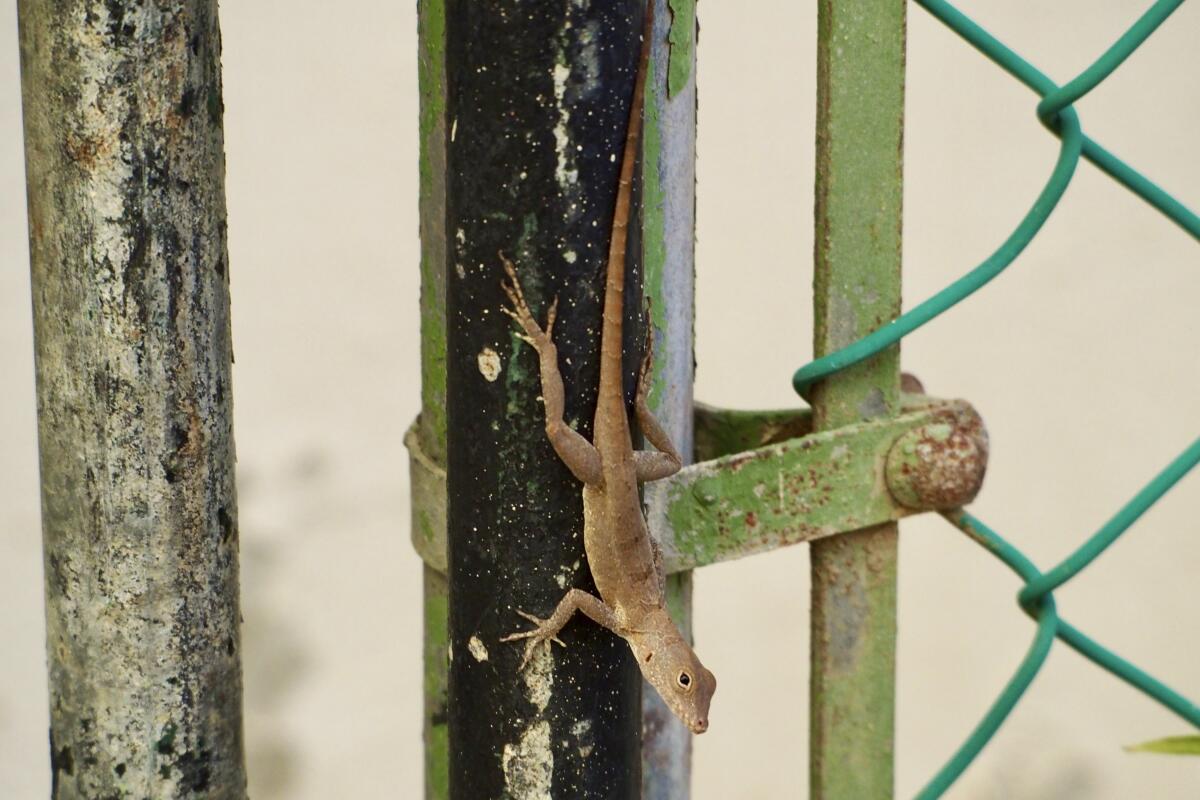‘Watching evolution as it’s unfolding’: Forest lizards genetically morph for city life

- Share via
SAN JUAN, Puerto Rico — Lizards that once dwelled in forests but now slink around urban areas have genetically morphed to survive life in the city, researchers have found.
The Puerto Rican crested anole, a brown lizard with a bright orange throat fan, has sprouted special scales to better cling to smooth surfaces such as walls and windows and has grown larger limbs to sprint across open areas, scientists say.
“We are watching evolution as it’s unfolding,” said Kristin Winchell, a biology professor at New York University and main author of the study published Monday in the Proceedings of the National Academy of Sciences.
As urbanization intensifies around the world, it’s important to understand how organisms adapt and humans can design cities in ways that support all species, Winchell said.
The study analyzed 96 Anolis cristatellus lizards, comparing the genetic makeup of forest dwellers to those living in Puerto Rico’s capital, San Juan, and the northern city of Arecibo and western city of Mayaguez. Scientists found that 33 genes within the lizard genome were repeatedly associated with urbanization.
“You can hardly get closer to a smoking gun!” said Wouter Halfwerk, an evolutionary ecologist and professor at Vrije University Amsterdam who was not involved in the study.
He said he was impressed that the scientists were able to detect such a clear genomic signature of adaptation: “The ultimate goal within the field of urban adaptive evolution is to find evidence for heritable traits and their genomic architecture.”
Winchell said the lizards’ physical differences appeared to be mirrored at the genomic level.
“If urban populations are evolving with parallel physical and genomic changes, we may even be able to predict how populations will respond to urbanization just by looking at genetic markers,” she said.
The changes in these lizards, whose lifespans are roughly seven years, can occur very quickly, within 30 to 80 generations, enabling them to escape from predators and survive in urban areas, Winchell added. The larger limbs, for example, enable them to run more quickly across a hot parking lot, and the special scales to hold onto surfaces much smoother than trees.
“They can’t dig their claws into it. ... [Or] squirrel around to the backside,” she noted.
The scientists chased after dozens of lizards for their study, catching them with their hands or using fishing poles with a tiny lasso to snag them.
“It takes some practice,” Winchell said.
On occasion, they had to ask permission to catch lizards off people’s homes.
Among Winchell’s favorite findings was a rare albino lizard. She also found a nearly 8-inch one, rather large for the species, that she nicknamed “Godzilla.”
The study focused on adult male lizards, so it’s unclear whether females are changing in the same way or at the same rate as males, and at which point in a lizard’s life the changes are occurring.
Halfwerk, whose research showed how one frog species changed its mating call in urban areas, said scientists should look next for possible constraints on the evolutionary response and how morphology relates to mating behavior.
“Ultimately, to cash in on adaptive traits for survival, they need to lead to higher reproduction,” he said.
More to Read
Sign up for Essential California
The most important California stories and recommendations in your inbox every morning.
You may occasionally receive promotional content from the Los Angeles Times.










